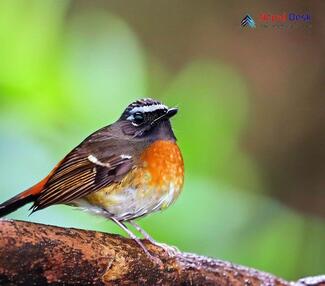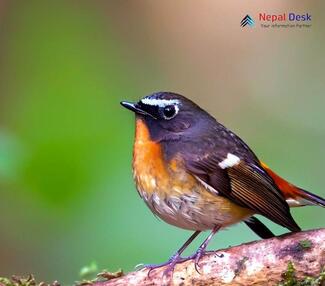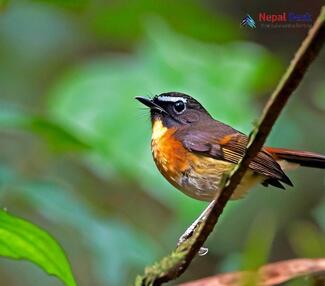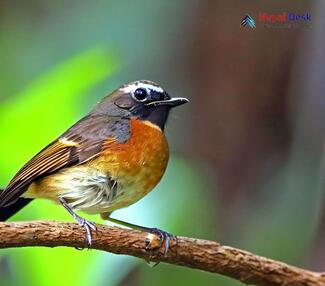The Rufous-gorgeted Flycatcher (Ficedula strophiata) is a small, yet captivating bird species that never fails to intrigue bird enthusiasts and nature lovers alike. Distinguished by its unique taxonomy and physical features, along with its fascinating habitat and diet preferences, this avian wonder has successfully made its mark in the birdwatching world. In Nepal, it has established a significant presence, adding a touch of vibrancy to the country's diverse wildlife population. So, let's explore more about this remarkable species and delve into the exceptional characteristics of the Rufous-gorgeted Flycatcher.
Taxonomy and Physical Features
Belonging to the genus Ficedula in the family Muscicapidae, the Rufous-gorgeted Flycatcher is a member of the order Passeriformes. What sets it apart from its counterparts is not only its vibrant appearance but also its striking vocalizations that make it easily discernible from other flycatchers.
The Rufous-gorgeted Flycatcher boasts an array of beautiful colors on its body that make it stand out amongst other birds. Males typically display an eye-catching rufous hue on their gorget – a band across their throat – contrasting with their blueish-gray head. Their back and wings exhibit a glossy black, while their belly sports an enchanting shade of orange. Females, on the other hand, possess more muted colors with olive-brown upperparts and less vivid gorget patches.
Habitat Preferences
This beautiful bird species prefers dwelling in moist, subtropical forests, generally at elevations ranging from 2,000 to 3,500 meters above sea level. It thrives within dense undergrowth and can often be spotted near streams, leapfrogging from branch to branch as it expertly navigates its lush surroundings. The Rufous-gorgeted Flycatcher has also been observed inhabiting coniferous woodlands, mixed deciduous forests, and sometimes even gardens – making it an incredibly adaptable species.
Dietary Habits
Primarily insectivorous in nature, the Rufous-gorgeted Flycatcher feeds on a wide array of insects, such as butterflies, moths, caterpillars, beetles, and spiders. Utilizing its agility and sharp beak, the bird skillfully snatches its prey mid-flight or plucks them off branches and leaves. This feeding behavior highlights its crucial role in maintaining the balance of local ecosystems by naturally keeping insect populations in check.
Presence in Nepal
In Nepal, the Rufous-gorgeted Flycatcher holds a significant presence in numerous national parks and conservation areas, such as Shivapuri Nagarjun National Park, Langtang National Park, Makalu Barun National Park, and Annapurna Conservation Area. These protected sites offer suitable habitats for the species to thrive while contributing to Nepal's remarkable biodiversity.
In conclusion, the Rufous-gorgeted Flycatcher (Ficedula strophiata) has established itself as a visually stunning and ecologically significant member of avifauna. Its unique physical features, fascinating habitat preferences, and intriguing diet make it well worth observing for those with an appreciation for nature's lesser-known wonders. Furthermore, by taking into consideration its valuable presence in Nepal's diverse ecosystems and wildlife reserves, it becomes clear how this enigmatic species is a true gem within the world of ornithology.




